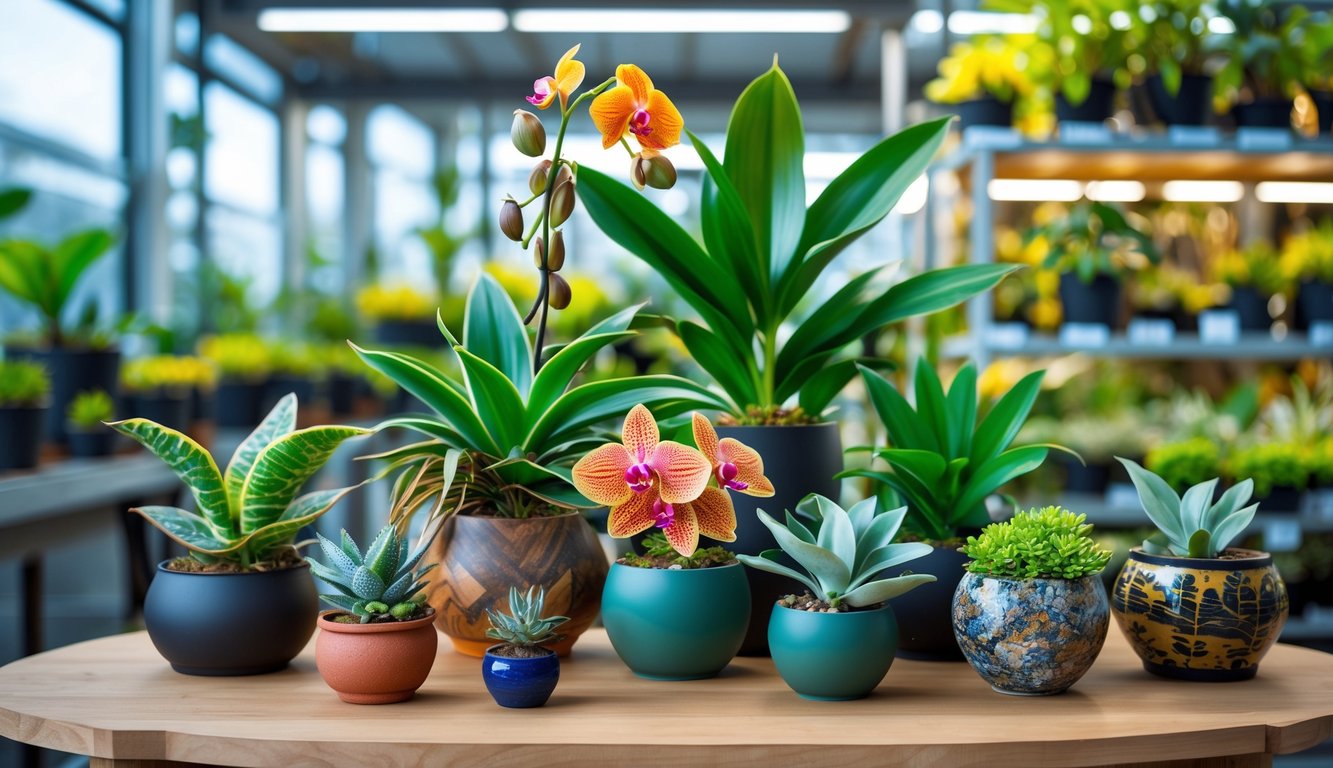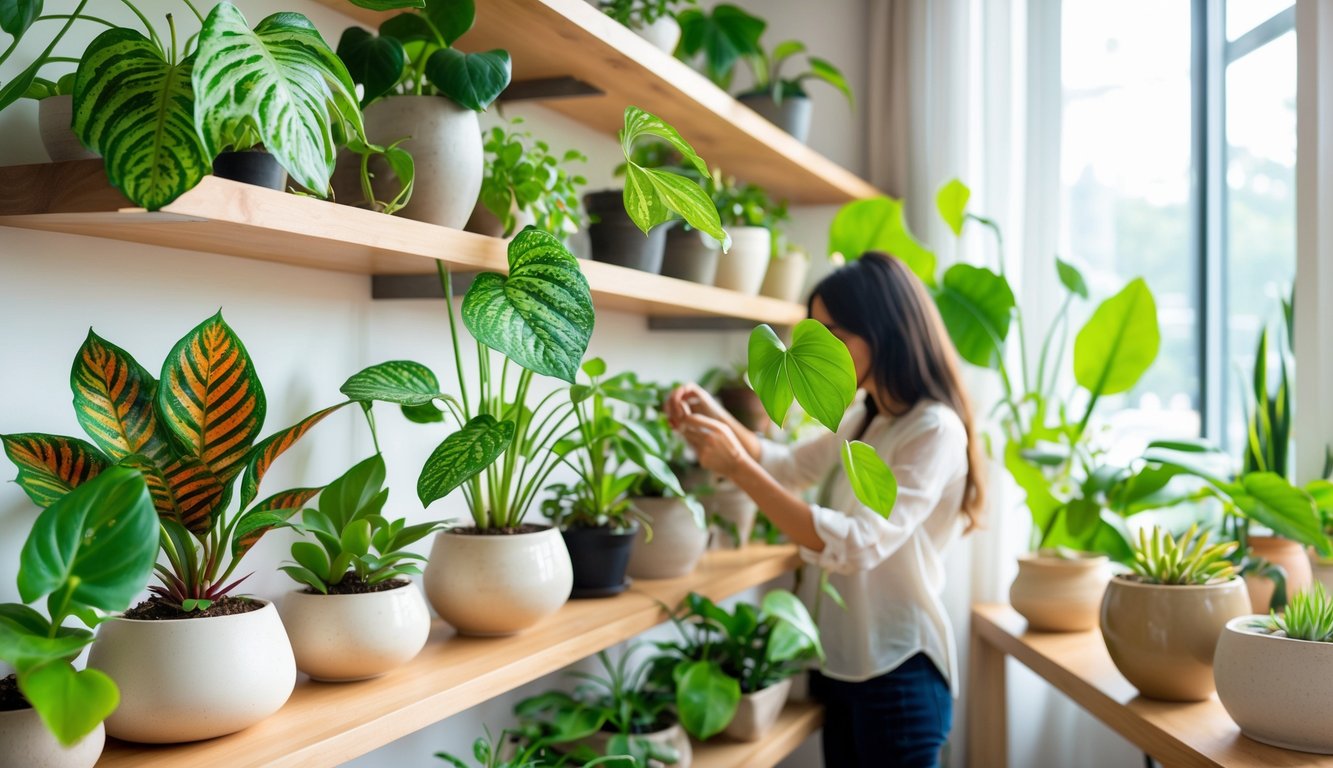
Caring for Rare and Unusual Houseplants

Keeping rare plants alive is way harder than people admit. Spraying them every Tuesday? Doesn’t cut it. I lost a $250 Philodendron Spiritus Sancti because some forum rando said tap water was “fine in moderation.” Lies.
Best Growing Conditions for Rare Species
Honestly, half my rare Syngonium and imported Monstera only perked up after I used a light meter. Most guides say “bright indirect light”—what does that even mean? According to University of Florida’s IFAS Extension, you need 150-300 foot-candles for aroids, some want 600+. I use a LuxLight meter app (cost me $3, not sure it’s accurate) and run my grow lights for 10-14 hours, depending on which plant looks sad that week. Root rot? Yeah, that’s on me for using pretty pots with no drainage. Every collector has at least one “photo only” pot hiding a dead plant.
Maintaining Humidity and Drainage
My humidifier was useless for Anthurium clarinervium. Amazon says “90% humidity in 10 minutes”—sure, if you’re measuring inside the tank. Real talk: rare plants want consistent, high humidity. I tape a $15 hygrometer near each plant (not the fancy ones—they all break). Closed terrariums? Mold factories unless you know what you’re doing. Pebble trays and cheap domes have kept my Epipremnum alive through winter, so I’ll take the win. Drainage isn’t just holes in pots. I layer perlite, mesh screens, and repot as soon as the soil smells weird. Most people ignore salt crust but after three root disasters, I flush my pots monthly with purified water. Is it high-maintenance? Yeah. Worth it? Maybe. Still hooked, though.
How to Spot and Avoid Common Pitfalls in Rare Plant Collecting
Every time a rare plant pops up in a Facebook group, everyone loses it—nobody stops to ask if it’s even real. And don’t get me started on resale prices. $800 for a Monstera albo node, and then you find out it’s a tissue culture clone that’ll never fenestrate. Classic.
Identifying Authentic Varieties
Jumping into rare plant collecting? Prepare your wallet (and your patience). Honestly, half the time it’s a guessing game. I’ve been burned—paid triple for a “variegated” Philodendron that turned out to be a faded baby. Real botanists like Dr. Emily Schultz (University of Michigan) say to compare leaf shape, veining, even roots—skip that, and you’ll end up with a plain green $20 plant.
Here’s a trick nobody talks about: demand high-res, close-up photos of new growth and leaf undersides. Reputable sellers (not just Instagram flippers) list parentage and origin. I always ask for video proof with a timestamped note—saved me from tissue-cultured duds more than once. If nothing else, that stops most of the imposters.
Avoiding Overpaying and Scams
Honestly, if it was just “buy from trusted sources,” I’d have a lot more money and fewer headaches. The rare plant world? Absolute chaos. Renamed hybrids, fake pre-orders, people selling “exclusive” clones that look suspiciously like the last “exclusive” clone. I mean, scams everywhere—PayPal invoices? Faked all the time. I watched some self-appointed aroid expert vanish after an auction, leaving like forty people out cash and hope. So yeah, check seller reputations. I lurk in r/houseplants, scroll through those blacklist threads on PlantSwap.org—sometimes I even recognize names, which is…unsettling.
Most of the so-called experts—CBC Marketplace, some nursery folks, whoever—yell about never wiring money, never doing direct transfers, especially if the price is weirdly low. My rule: If someone’s listing a Philodendron Spiritus Sancti for less than a grand, I freeze. That’s not normal. It’s probably a scam. And, just to make me feel worse, the American Orchid Society did a survey in 2023 and said a third of newbies got scammed. So I stick to buyer protection platforms, even if shipping is a joke. You can’t grow a collection off blurry photos and empty promises. Might as well compost your cash.
Investment Potential: Are Rare Plants a Sustainable Asset?
I mean, is this even a thing? I scroll listings, try to do the math, watch Monstera prices jump from $20 to $200 in, like, a year. It’s absurd. Demand spikes, sellers dump cuttings, then suddenly everyone’s stuck with plants nobody wants. Feels like crypto with leaves. Especially in those 2025 sale groups—ask literally anyone who’s lost sleep over Anthurium auctions.
Short-Term Fluctuations vs. Long-Term Value
It’s just nuts. I’ve seen sellers double prices overnight when a new “rare” plant drops. Remember Pink Princess? People went wild. Philodendron White Knight was $1200, then tissue-culture labs started pumping them out and now you can grab one on eBay for $150. So, sustainable profit? Yeah, right. A few old-school collectors warned me: “You have to time it perfectly or you’re just holding onto sad, unsellable cuttings.” And if you jump in during peak hype? Good luck. Unless you’re hoarding slow-propagating varieties, you’re probably out of luck.
Most of my grower friends? They don’t even bother with Instagram trends. They stick to boring-but-steady stuff—Musa Ae Ae, whatever sells reliably. Even in 2025, shipping delays or some influencer post can send prices all over, but calling rare plants a “sustainable asset” is…optimistic. Maybe if you’re dealing with a species that’s actually threatened and can’t be exported. Otherwise? Legal headaches, paperwork, and a garage full of plants nobody wants. Flip quick or get stuck.
Understanding Market Cycles
There’s no logic. One week, TikTok blows up over some rare Alocasia, then the market collapses when growers finally catch up. Watching price charts is like staring at a heart monitor. Even plant auction houses had to start checking last month’s prices daily because things move that fast. In late 2024, Alts.co pulled data showing prices for rare plants dropped 65% just three months after peaking. Then they crawl back up, sometimes. Or not.
I used to keep spreadsheets—tracking Calathea orbifolia, some imported Adansonii—hoping for a pattern. There isn’t one. A rare photo goes viral, breeders rush in, tissue culture floods the market, prices crash. Vertical farms made it easier to keep genetic stock, but the costs and unpredictability wiped out most new investors anyway.
And now? Someone’s pitching NFTs for rare plant authenticity. I don’t get it. Is that supposed to fix price crashes? The only real tip I’ve got: unless you’re already a pro breeder or sitting on a pile of mother plants, pure luck and timing matter way more than any chart.